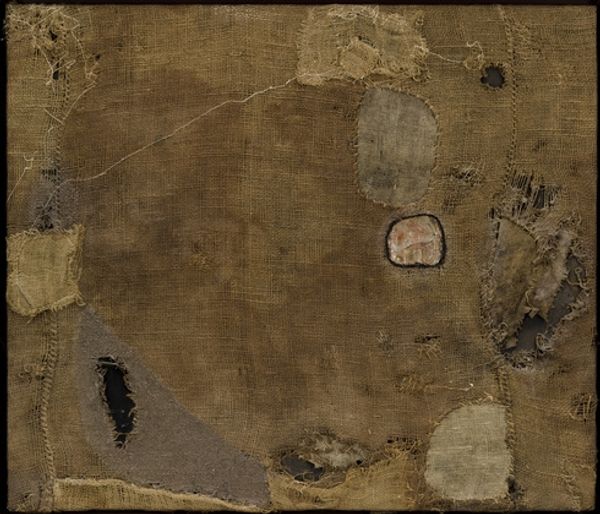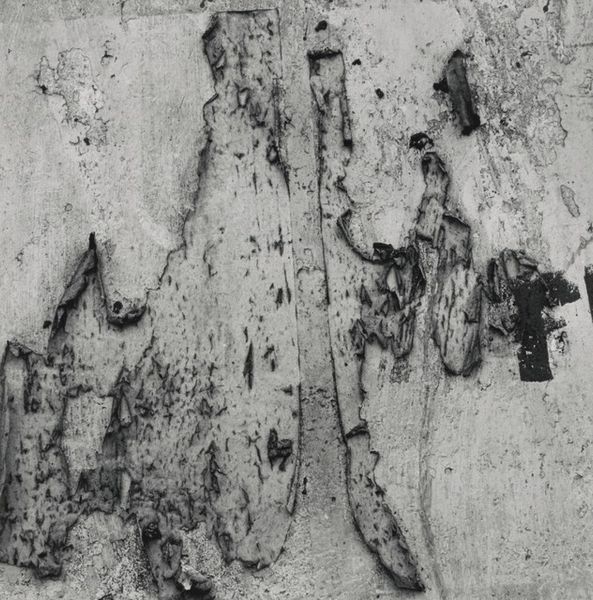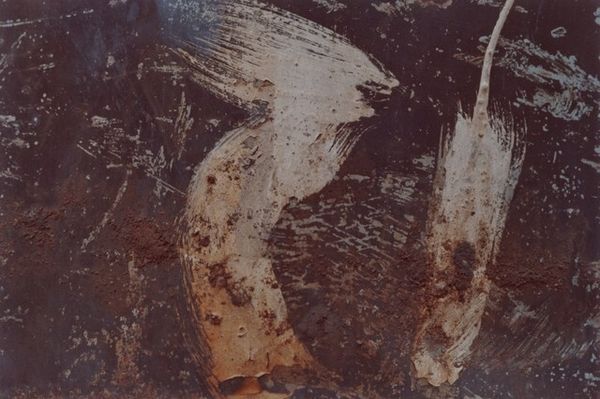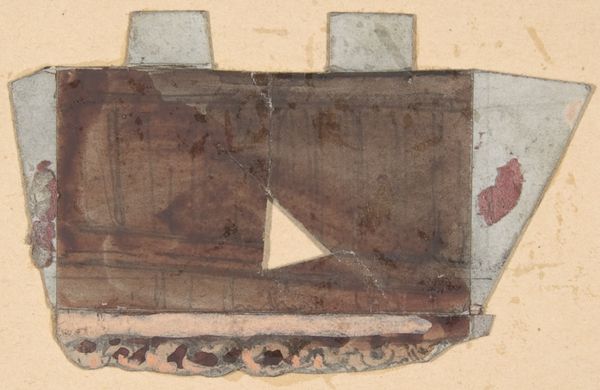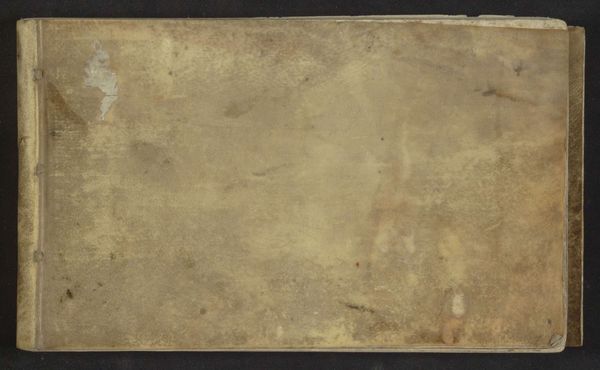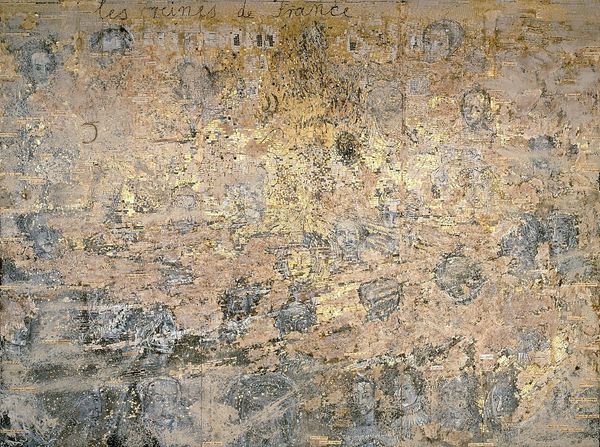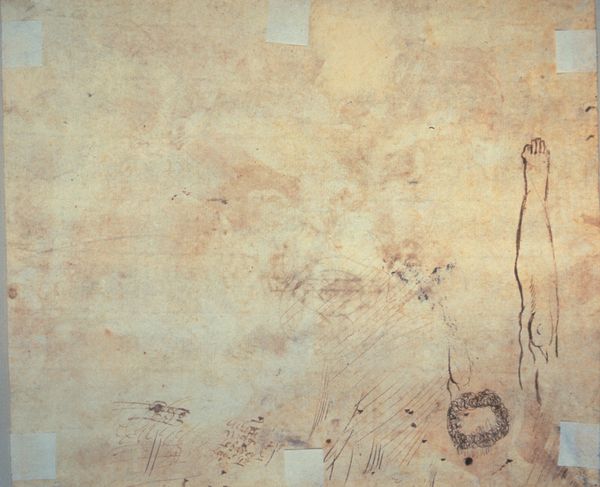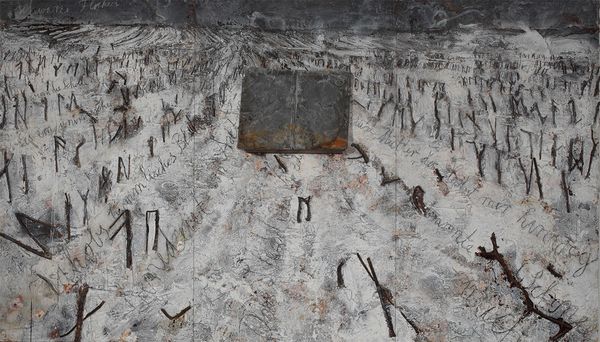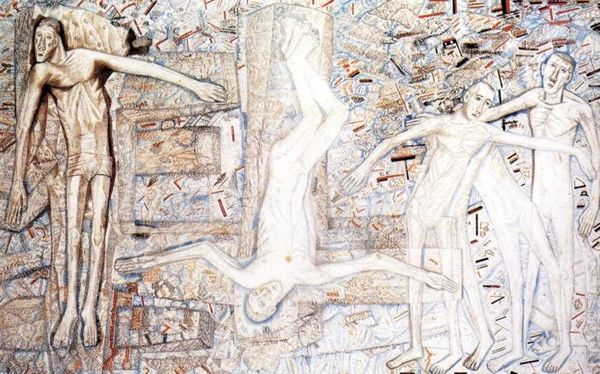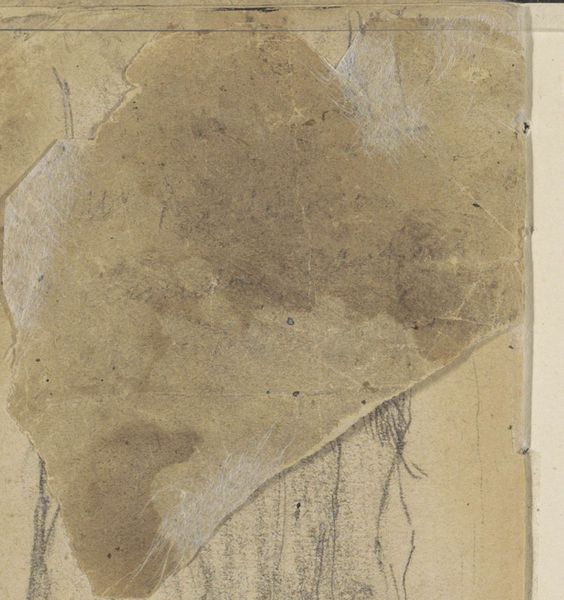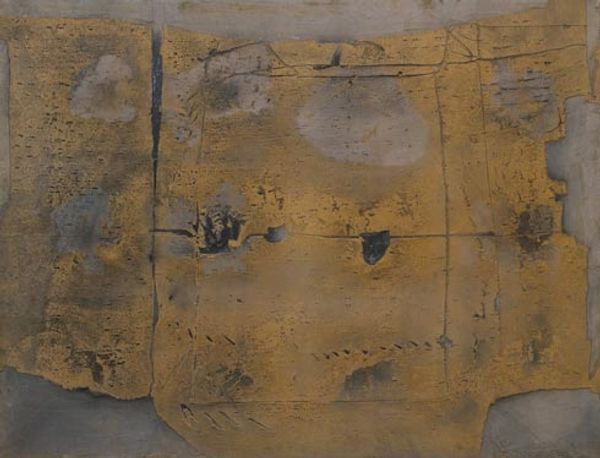
Dimensions: support: 660 x 508 mm frame: 805 x 654 x 50 mm
Copyright: © The estate of Prunella Clough | CC-BY-NC-ND 4.0 DEED, Photo: Tate
Curator: Prunella Clough created "Rockery" in 1963. It's currently held here at the Tate Modern. Editor: My first impression is a sense of quiet fragmentation, almost a ghostly relic rendered in muted tones. Curator: Clough often drew inspiration from urban and industrial landscapes. You see this in the mid-century British art scene, a response to postwar environments. Editor: The composition is really interesting. Those vertical lines at the top and bottom seem to contain the more amorphous rock formation, creating a stark contrast. Curator: It's interesting how Clough elevates overlooked spaces. Post-war, these neglected areas become metaphors for social change and recovery. Editor: The texture is so rich, though. It feels like she's built up layers of paint to mimic the roughness and irregularity of stone. Curator: Absolutely. Clough's ability to transform the mundane into something thought-provoking is quite striking. Editor: It does make you reconsider beauty, or where one might find it. Curator: Yes, a painting that reveals the hidden beauty of overlooked spaces. Editor: And a reminder of how surface can imply depth.
Comments
tatemodern 6 months ago
⋮
http://www.tate.org.uk/art/artworks/clough-rockery-1963-t00691
Join the conversation
Join millions of artists and users on Artera today and experience the ultimate creative platform.
tatemodern 6 months ago
⋮
Clough described her use of colour as ‘muffled, tonal, and murky’. Here, as the title suggests, she depicts a garden in which plants grow among heaped, rough stones. Clough became known as an abstract painter, but she saw her ‘subject matter mainly as landscape’. However, it was the feeling, not just the look of a place that mattered to her. She walked through the landscapes she wanted to paint, explaining: ‘the sense of place is crucial for me and involves sensations other than the purely optical ones of observation’. Gallery label, June 2020
